[Meadowrues: The Genus Thalicrtum East of the Cascade Mts. of Oregon and Washington]
Western Meadowrue, Western Meadow-rue
Thalictrum occidentale
Synonyms: Thalictrum occidentale var. macounii, Thalictrum occidentale var. occidentale, Thalictrum occidentale var. palousense
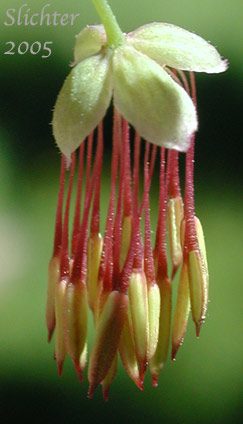
The photo above shows a close-up of the male flower of western meadowrue with its cluster of dangling stamens. Photographed at meadows immediately to the north of Hellroaring Creek adjacent to the Island Springs Trail #66 on Yakama Nation lands at the southeastern corner of Mt. Adams..........July 17, 2005.
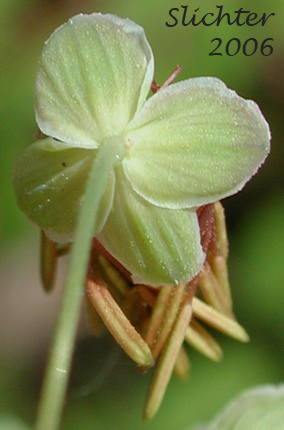 The photo at right shows a close-up of the ovate sepals of a male flower of western meadowrue as seen at MP 31 along the Columbia Gorge Highway to the west of Multnomah Falls..........April 20, 2006.
The photo at right shows a close-up of the ovate sepals of a male flower of western meadowrue as seen at MP 31 along the Columbia Gorge Highway to the west of Multnomah Falls..........April 20, 2006.
Characteristics:
The meadow rues have long been used ornamentally as decorative
plants in the shade garden. My experience has only been with domesticated varieties
which have fine, lacy and glaucous foliage but spread their seed so prolifically
that they soon take over the garden. I'm not sure how this native species would
behave (hopefully it's more restrained!), but it is smaller in stature where
it would blend in better with the chocolate lilies, sour grass, and star-flowered
false Solomon's seal.
That said, western meadow rue is an attractive wildflower with
erect, lacy-leafed stems arising 40-100 cm high . The herbage ranges from smooth
to somewhat glandular hairy. The leaves are found mostly on the stems where
they are alternately arranged. Individual leaves are 3-4 times ternately divided,
the individual leaflets generally triangular or wedge-shaped with the tips 3-lobed.
The inflorescence is leafy and bracteate with small leaves or
bracts among the flowers. Petals are lacking but the 4-5 sepals are 2-3 mm long
and greenish-white to purplish in color. The 15-30 stamens of male flowers are
pendant, the long thin filaments ranging from 4-8 mm long, tipped with purplish
anthers. The ovaries are found on female flowers, with the stigmas measuring
3-4.5 mm long and usually of a purplish color. The fruit consist of 7-11 spreading
to reflexed achenes.
Habitat:
Western meadow rue is found in moist coniferous woods at all
elevations on both sides of the Cascade Mt. Range.
Range:
Western meadow rue may be found from British Columbia south
along both sides of the Cascade Mts. to northern California and east through
mountainous areas to the Rocky Mts. from Alberta south to Wyoming, Colorado
and Utah.
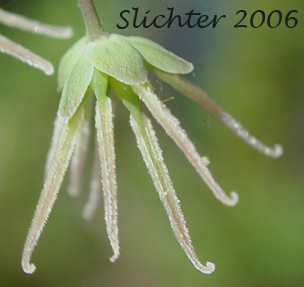
The photo above shows a close-up of a female flower of western meadowrue as seen at MP 31 along the Columbia Gorge Highway to the west of Multnomah Falls..........April 20, 2006.
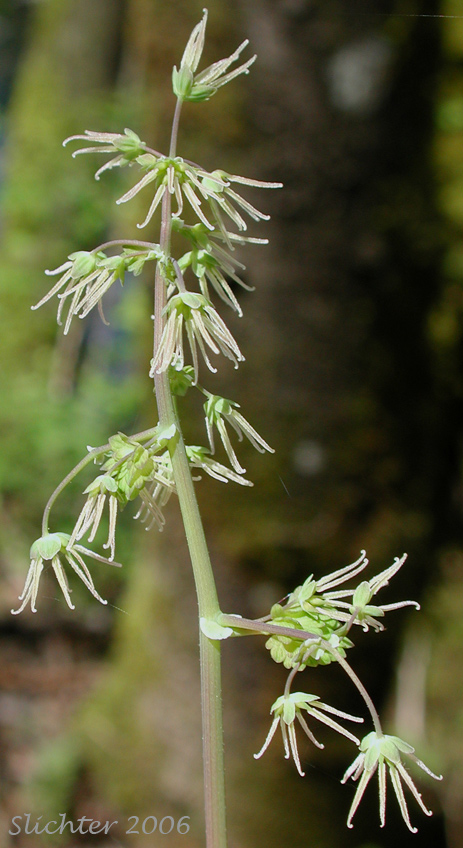
The photo above shows a close-up of the inflorescence with numerous, pendant female flowers of western meadowrue as seen at MP 31 along the Columbia Gorge Highway to the west of Multnomah Falls..........April 20, 2006.
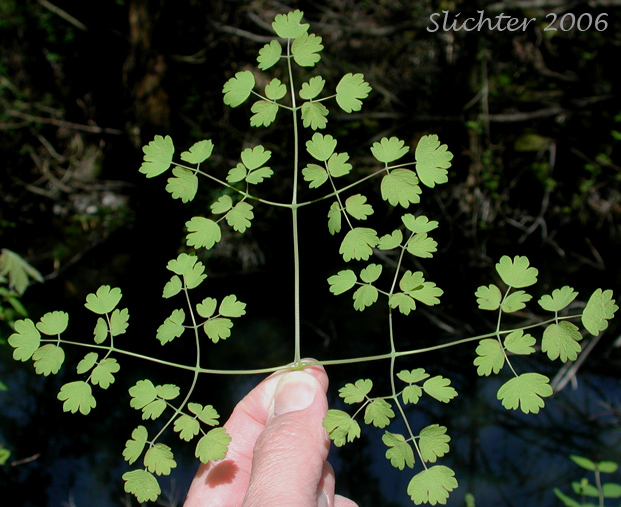 -
- 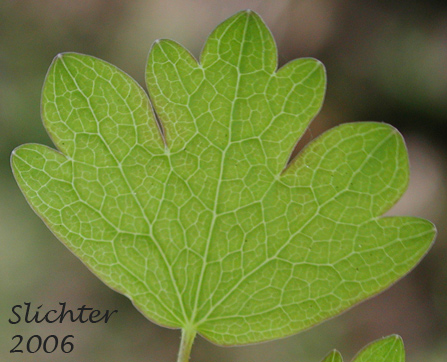
The photo at left shows a leaf while the photo at right shows a close-up of a leaflet of western meadowrue as seen at MP 31 along the Columbia Gorge Highway to the west of Multnomah Falls...............April 20, 2006.
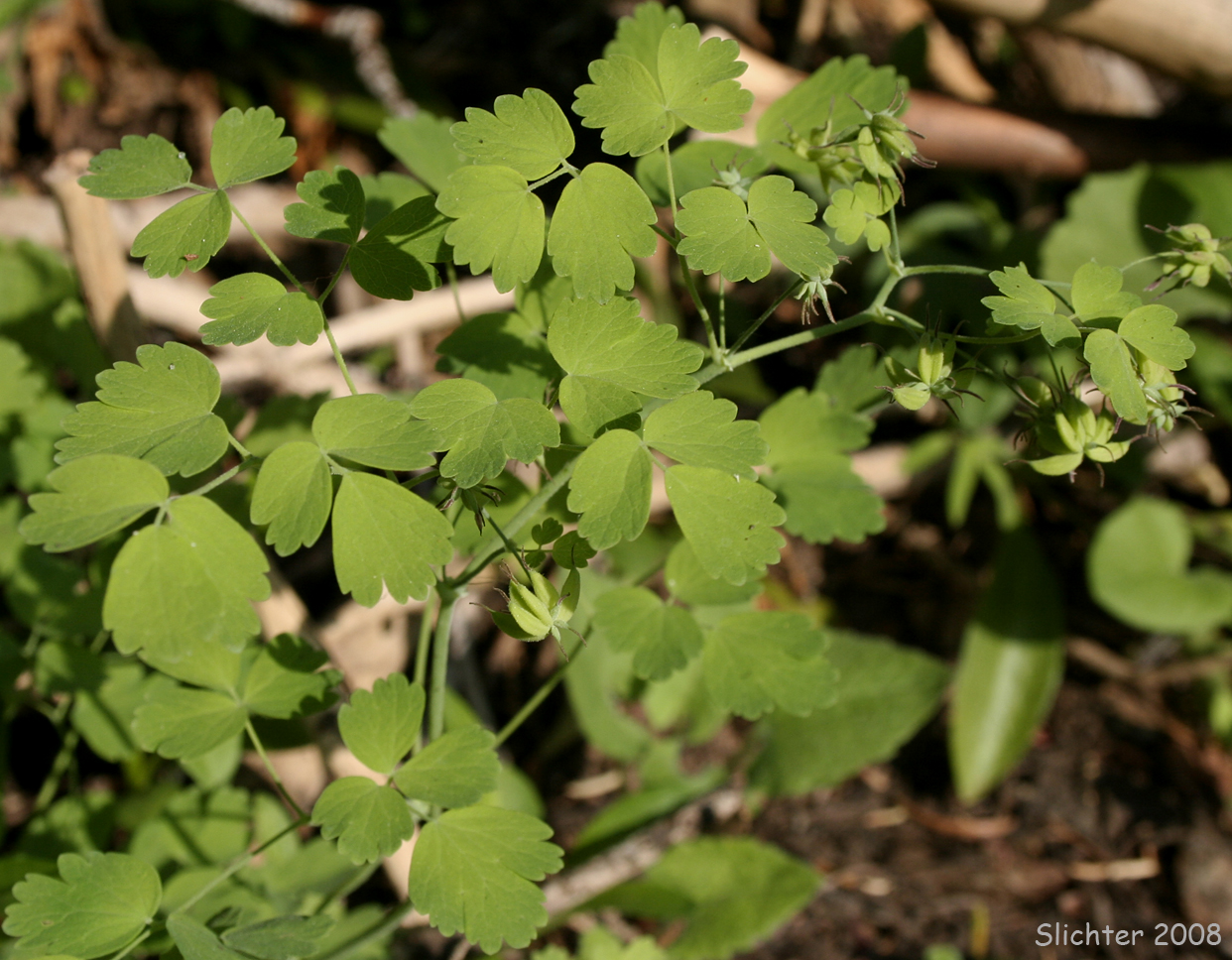 -
- 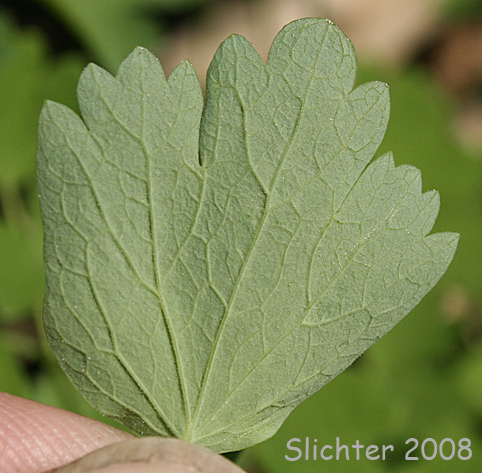 -
- 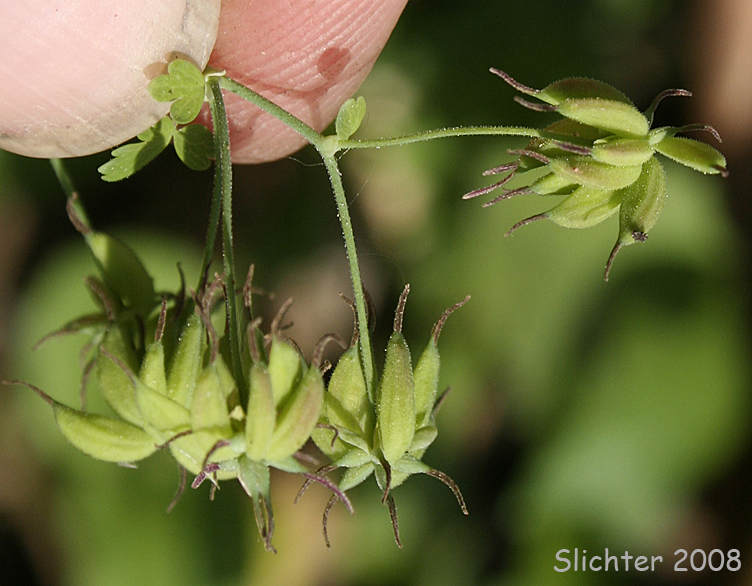
These 3 photos show close-up views of the female flowers and a leaflets of western meadowrue as seen on west-facing slopes below the Ray Ridge Viewpoint in the Umatilla N.F. of southeastern Washington..........July 6, 2008. Note the strongly reflexed achenes.
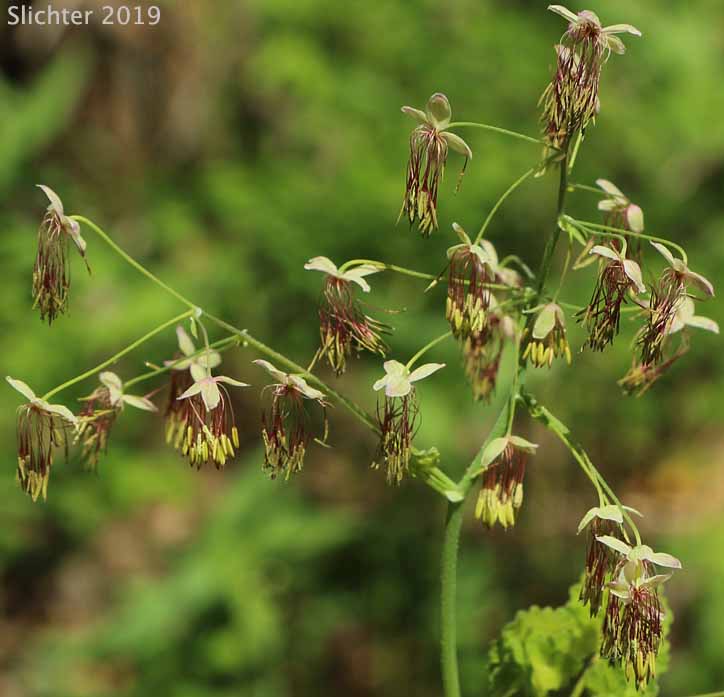 -
- 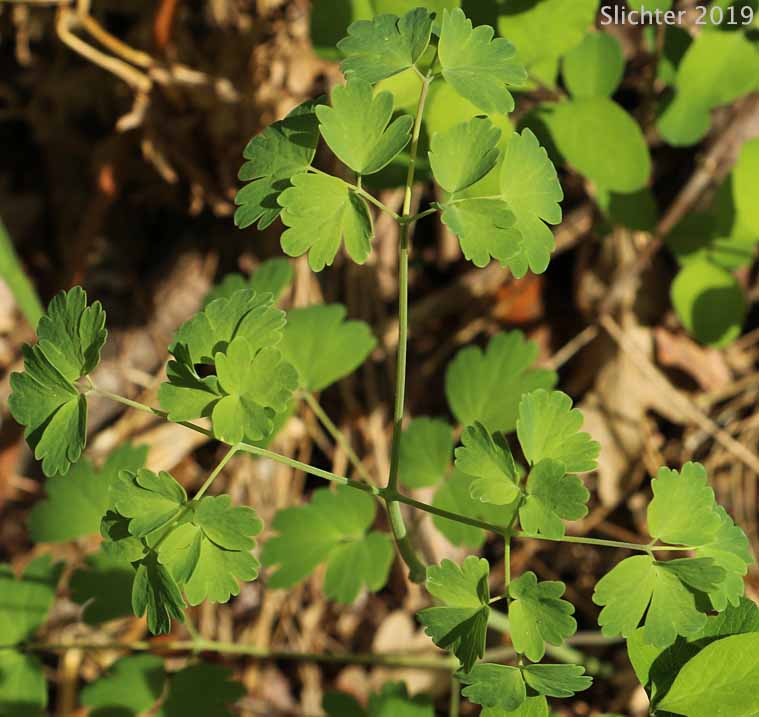
Western meadowrue blooming in open Oregon white oak - Douglas fir forest at Brooks Memorial State Park off US 97 near Satus Pass......May 13, 2019.
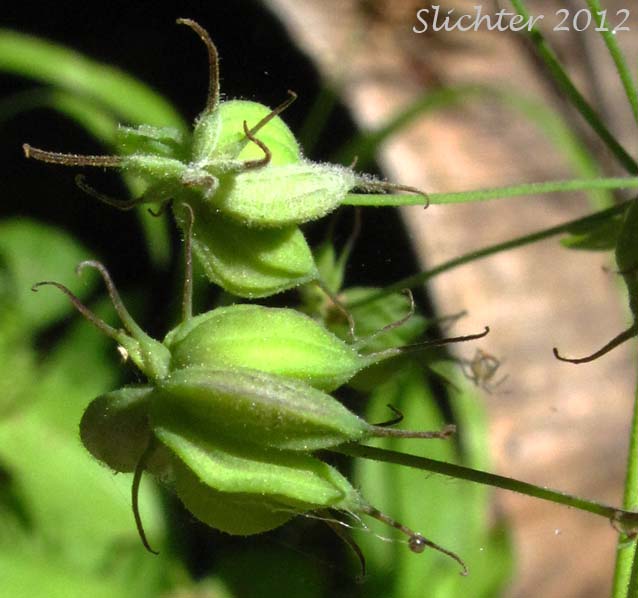 -
- 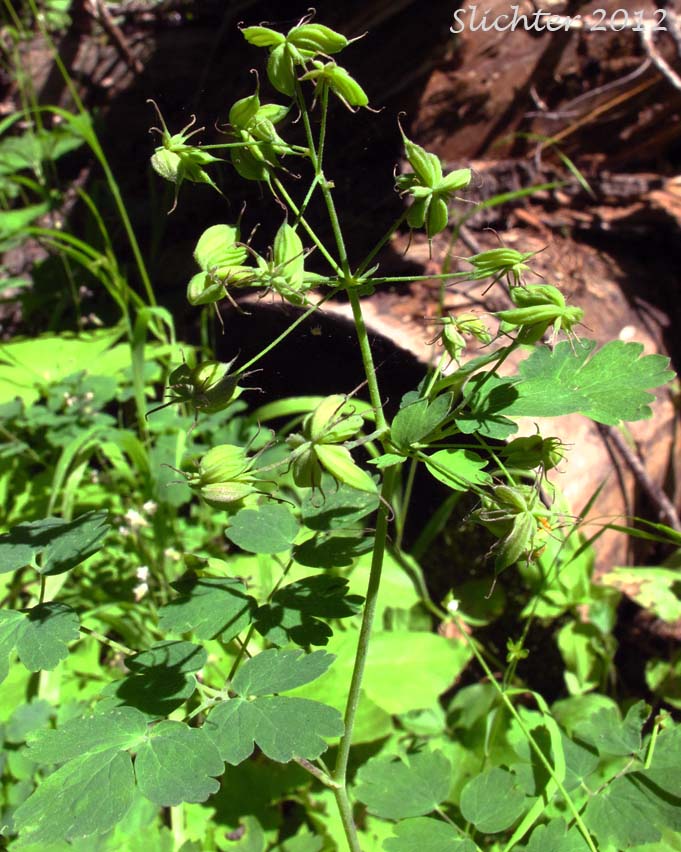
Close-ups of the developing, reflexed fruits of western meadowrue as seen along the Umatilla Rim Trail #3080 on the western slopes of High Ridge, Umatilla National Forest..........July 24, 2012.
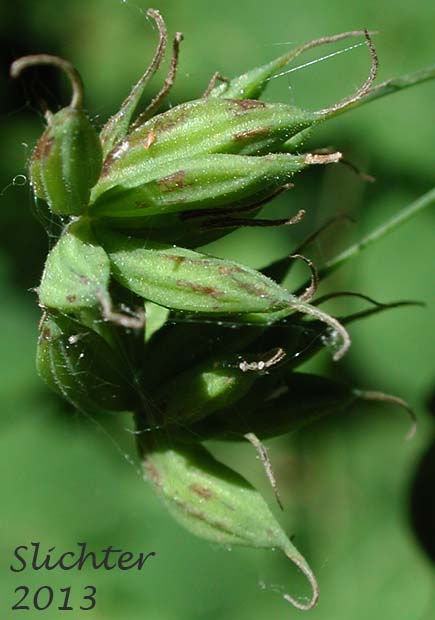 -
- 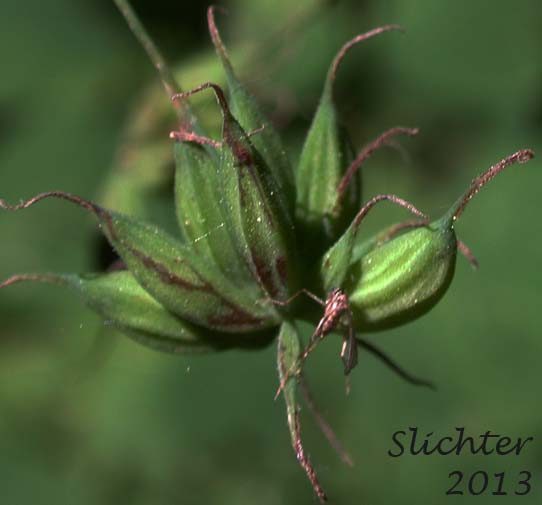 -
- 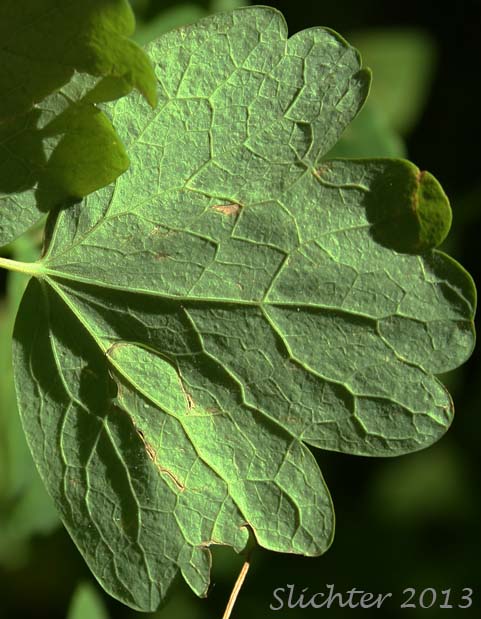
Western meadowrue as seen in forest on the north side of Kamiak Butte, Kamiak Butte County Park, Whitman County, Washington.........June 10, 2013.
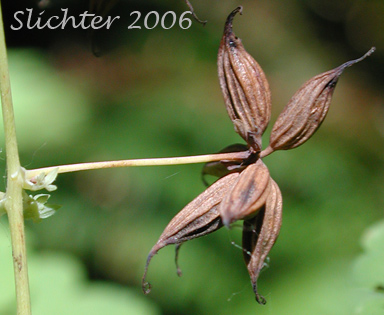 -
- 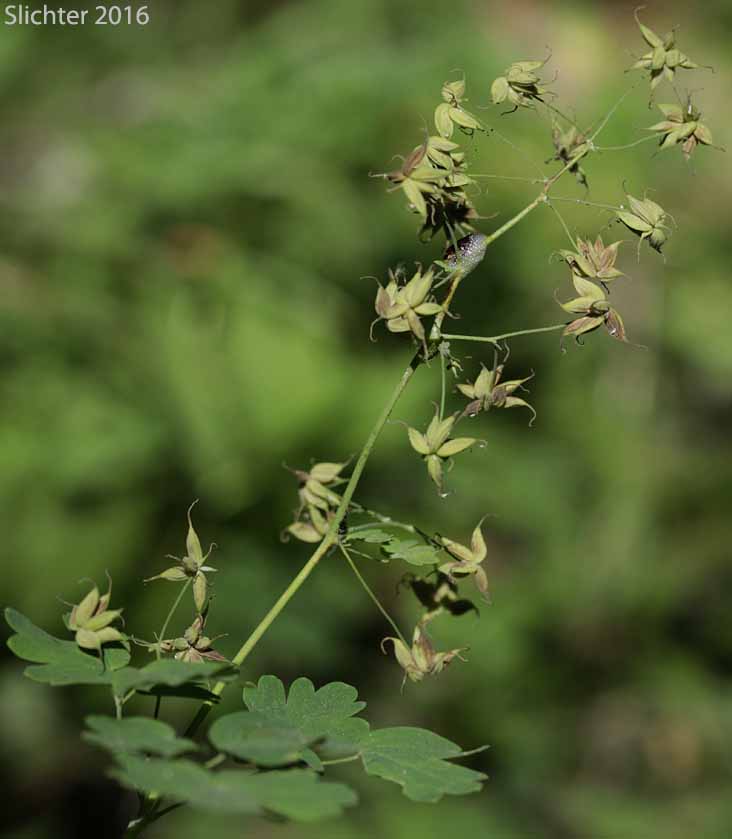
The achenes of western meadowrue as seen (left) along the Elowah Falls Trail in the western Columbia River Gorge.........July 14, 2006. The photo at right shows the inflorescence with green achenes as seen along the East Fork Lostine River Trail #1662, Eagle Cap Wilderness...........August 4, 2016.
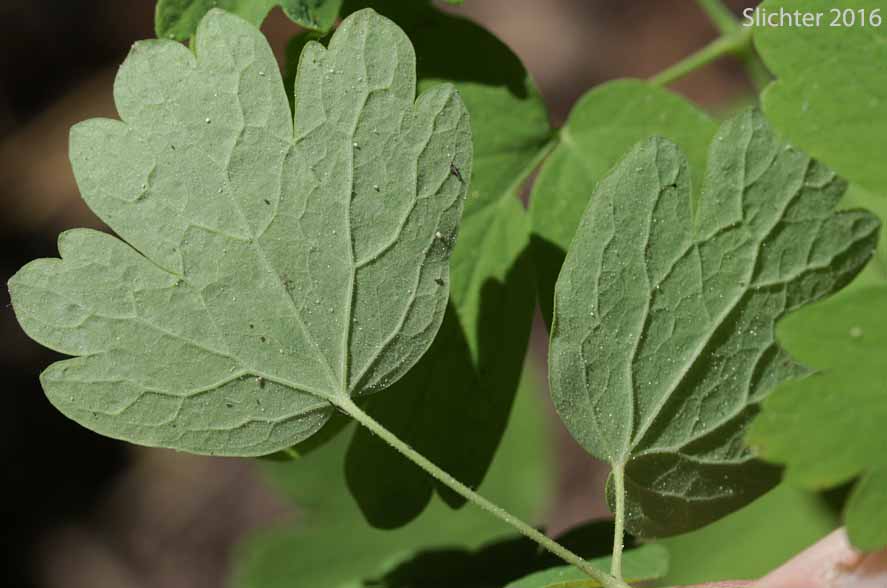 -
- 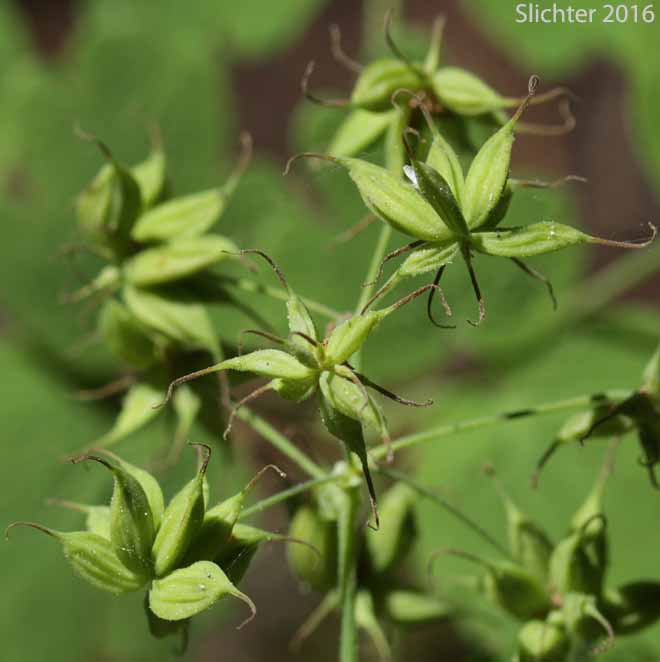
Western meadowrue as seen in the first mile of the Maxwell Lake Trail #1674, Eagle Cap Wilderness..........August 3, 2016. Note that the achenes are reflexed.

Maturing achenes of western meadowrue as seen along the Lick Creek Trail #1809, Hells Canyon National Recreation Area......July 17, 2019.
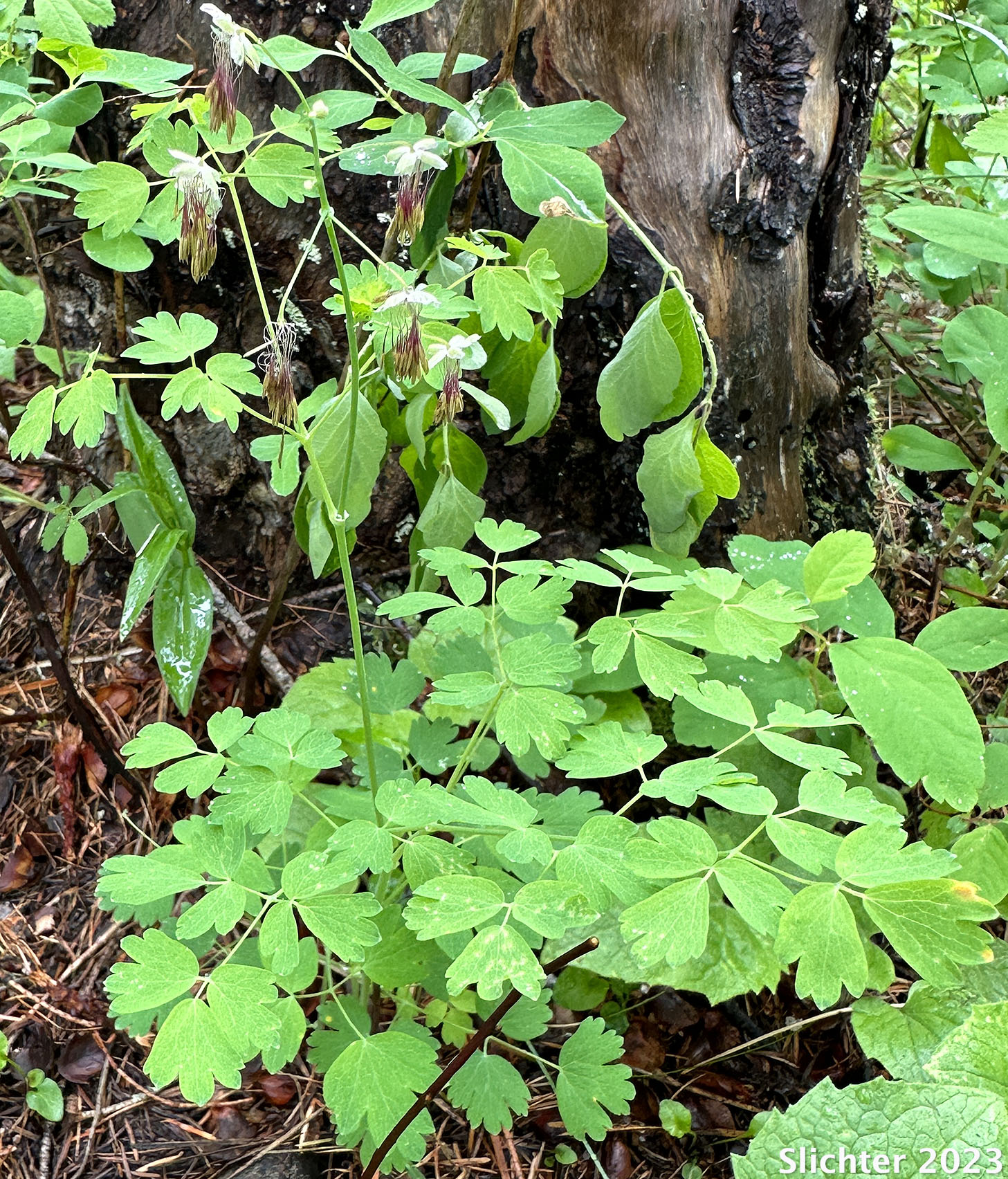
Western meadowrue blooming along the Holland Falls National Recreation Trail #416, Flathead National Forest......May 27, 2023.
Paul Slichter
 The photo at right shows a close-up of the ovate sepals of a male flower of western meadowrue as seen at MP 31 along the Columbia Gorge Highway to the west of Multnomah Falls..........April 20, 2006.
The photo at right shows a close-up of the ovate sepals of a male flower of western meadowrue as seen at MP 31 along the Columbia Gorge Highway to the west of Multnomah Falls..........April 20, 2006.